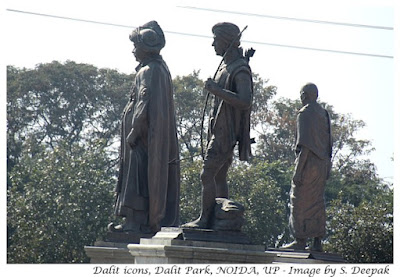I am writing my second novel - it is in Hindi, because after trying for about 20 years, I found that I was more comfortable writing my books in Hindi. I still do not have a publishing house for my first book but I am keeping my fingers crossed.
It took me almost two and a half years to write that first book, and during that period, I rewrote it 3 times before finding a structure that I liked. It is about a young man who discovers that the woman he had thought of as his mother was not his birth-mother and then for the rest of the book he tries to find more about and locate his birth-mother.
I had a basic idea but once I started writing, new ideas came all the time, some of which I tried. The final structure of book and many of its characters and scenes, which came out in the final version, were very different from my initial ideas.
However, when I think back about the writing of my first book, I can hardly remember all those changes and the experimenting with different ideas. (Click on the images for a bigger view)
It is the same with my second book. I am doing the second rewriting. It covers a long time period, more than a hundred years, and is spread across different countries. I think that I might need to do at least 2 more rewritings before I will have a proper draft. While I work on it, there are so many ideas which come to my mind and I try to incorporate some of them in my writing.
So I have thought of occasionally noting down in this blog about my writing process. This book revolves around 4 generations of a family involved in a tea garden.
The first version of this book had alternating chapters focusing on different characters from different countries and time-periods. I wrote around 80% of it but felt that its basic premise of the story focusing on a woman of the 3rd generation was not working, it seemed kind of flat and not very exciting.
In the second version, I have grouped together the chapters according to the time-periods, to make it easier to follow. Now, its focus has shifted to 2 characters from the second and fourth generations.
I had started writing it with longer chapters and fewer voices telling the story. After writing about 70% of this version in this way, one day I changed my strategy - now the chapters are shorter and the story is told by a larger number of voices. I still have about 10% of the book to complete but I like this second approach more, though it probably has too many events all reaching their culminations in the last few chapters, so it is kind of chaotic.
My plan is to finish this version, read it and then decide if I prefer it with longer chapters and fewer voices or shorter chapters with more voices.
While writing, sometimes some characters suddenly take form, come alive and become more complex, sometimes asking for greater space in the story. For example, some old photographs taken in 1930-1940s played a key role in the story in the first version. In this second version, I have a French guy as the photographer and a few scenes with him. Then, a few days ago, while going for a walk, I thought about that French guy and I felt that he is an interesting character and thus, it is possible that he will have a bigger role in the third version.
I love writing my book. For a few hours every day I get lost in the worlds of my characters and their stories. It is an amazing feeling.
*****
#authorsunil #sunildeepak #sunil_book #writingprocess








.jpg)




















